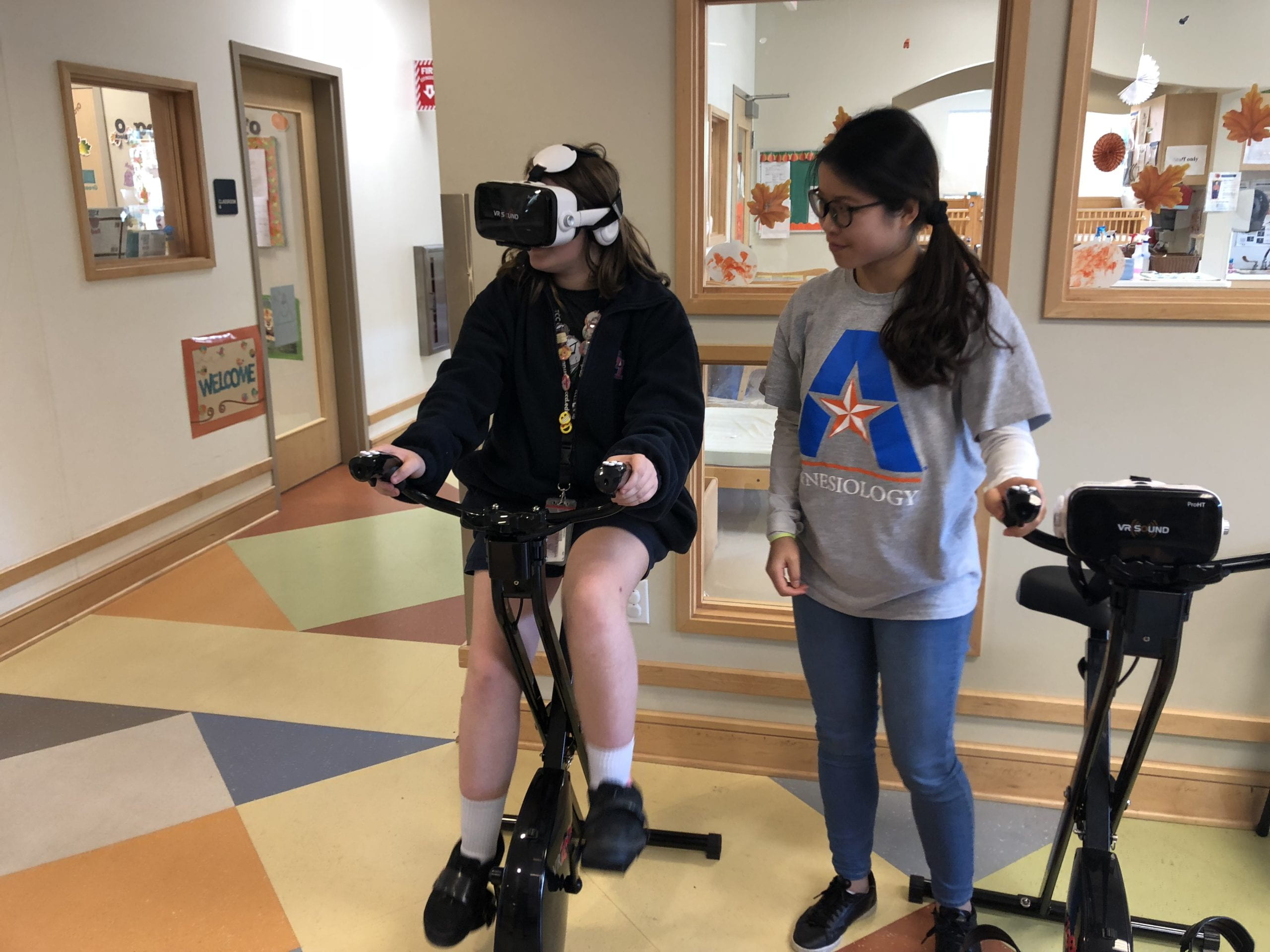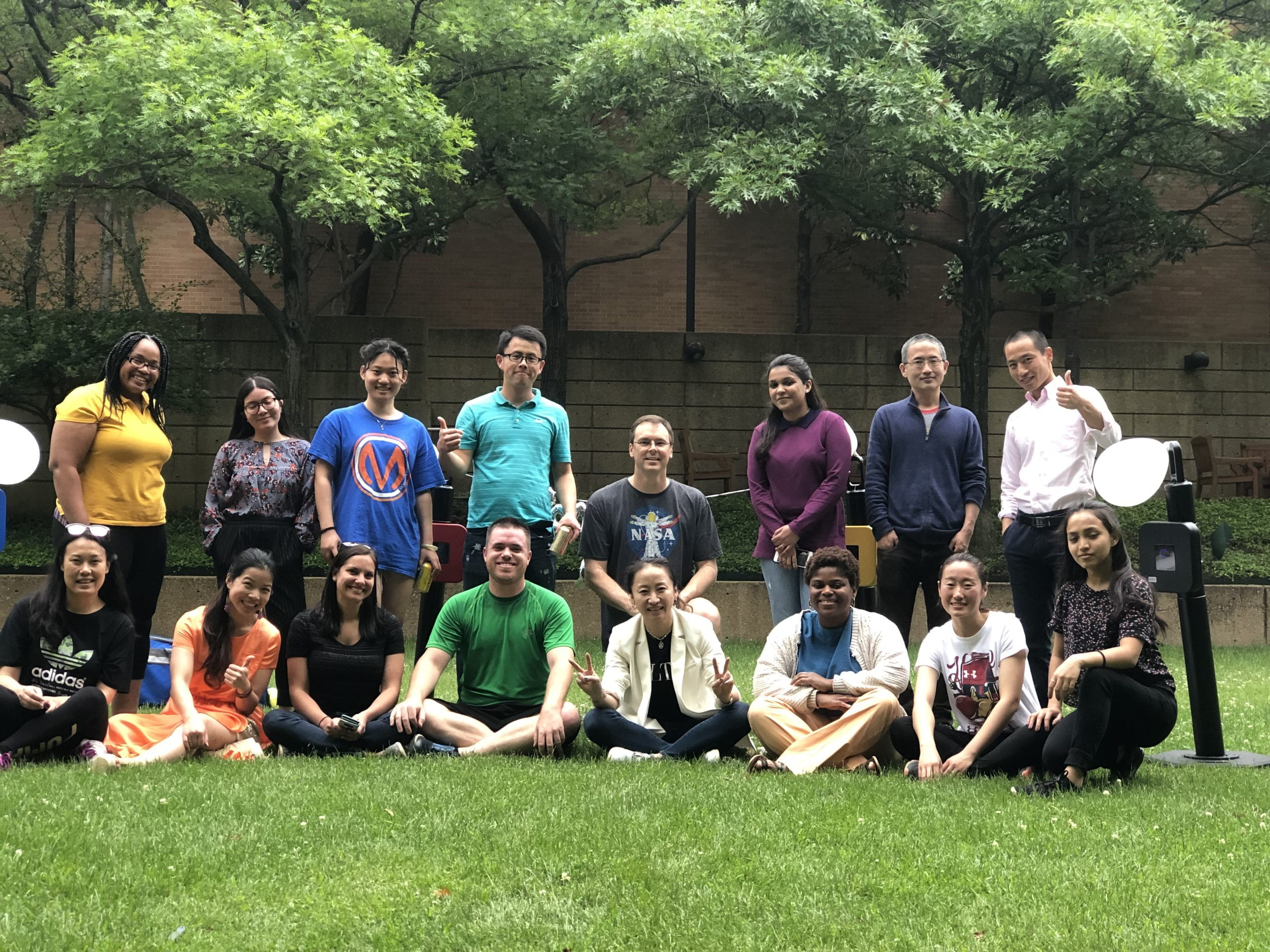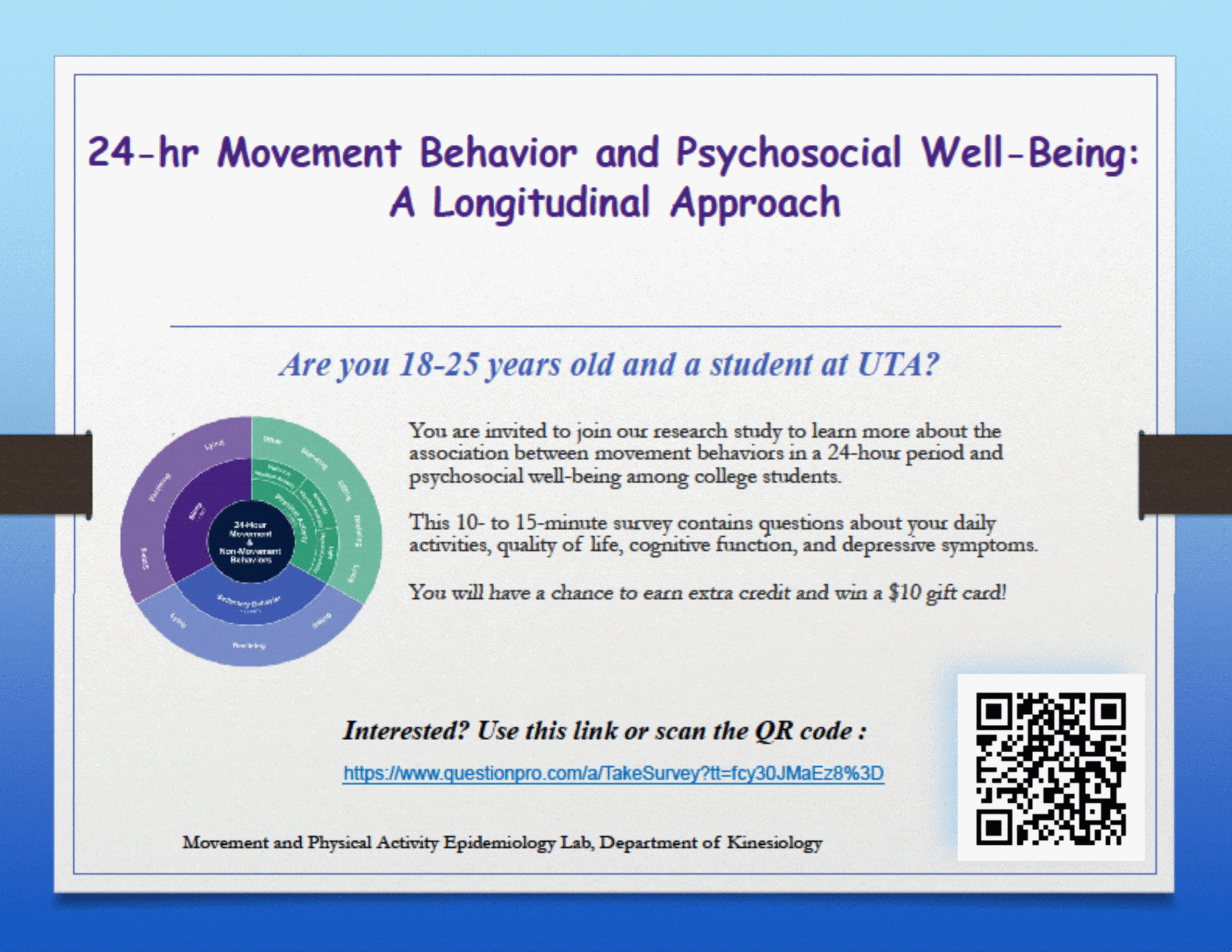
Almost 35 % of college students are screened having at least one lifetime mental disorder (Auerbach et al., 2018; Ibrahim, Kelly, Adams, & Glazebrook, 2013), thus, investigating the antecedents and correlates of their mental health and well-being is a public health priority, which is also aligned with the Goal of Healthy People 2030 as well as the SHAPE America’s 50 Million Strong initiative.
Guided by the behavioral mechanism of Lubans et al.’s conceptual model (2016), the main purpose of this longitudinal study is to examine how changes of 24-hour movement behavior (i.e., physical activity, sedentary behavior, and sleep) may correspond to the changes of mental health indicators (i.e., HRQOL and cognitive function) among depressed female college students over an academic school year.
This study is to examine the following relationships among junior high school adolescents:
- Social ecological indicators (i.e., social environment support, built environment support, perceived motor competence)
- 24-hour movement behaviors (i.e., physical activity, sedentary behavior, and sleep) and
- Brain health indicators (i.e., cognitive function and depression)


For more information, Contact:
Xiangli Gu
Click Here!